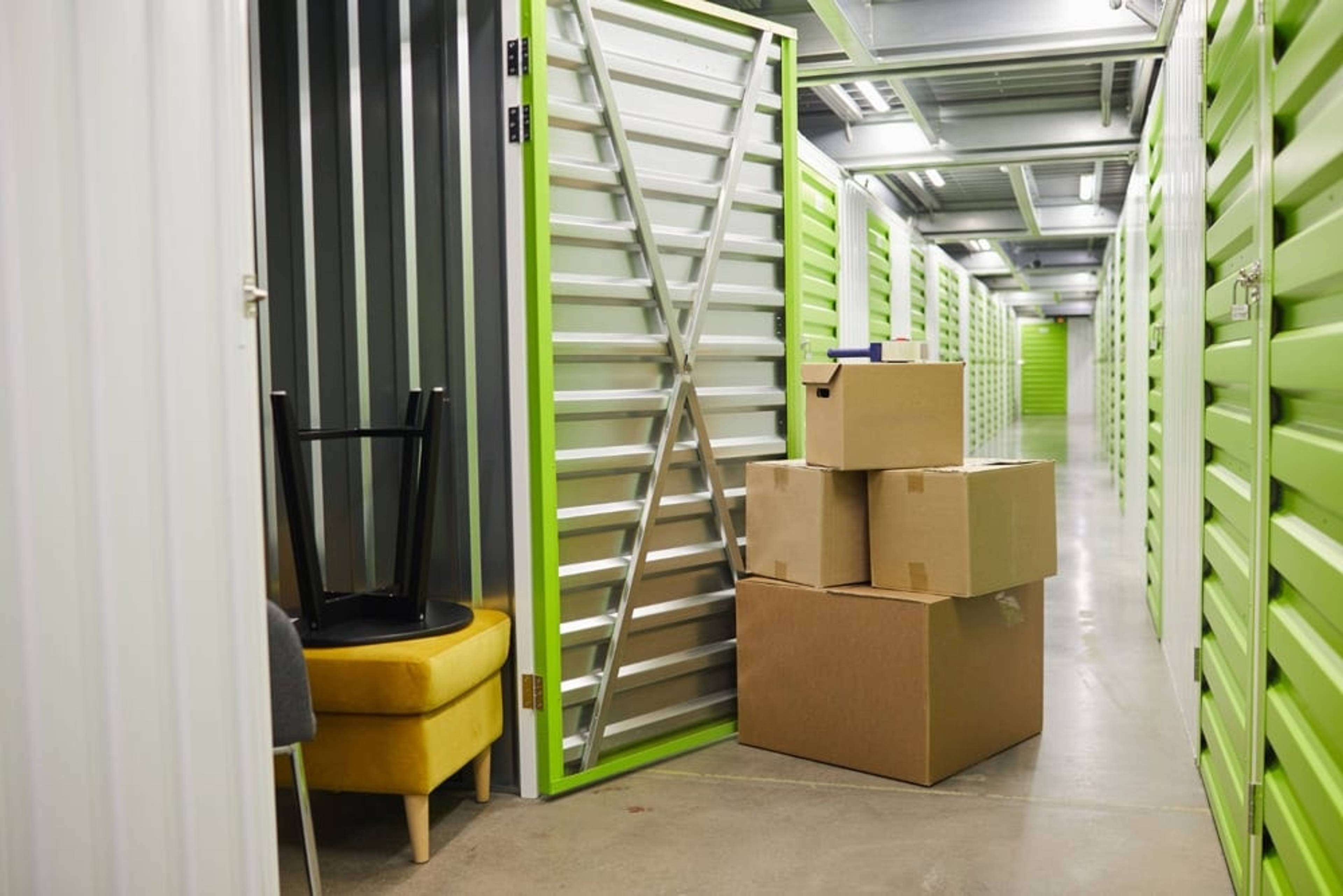When it comes to storing freezers, you might think you can just unplug them and move them into a storage unit. Moving a freezer or fridge without proper preparation can damage it, or lead to residual moisture, and potential health hazards.
This is especially important if you're storing food or planning to use the freezer again in the future. Whether it's an upright refrigerator, a chest freezer, or a smaller fridge-freezer combination, proper storage is vital if you want to use it again.
Freezers are an essential part of a moving house checklist, so make sure they stay in tip-top condition when you're moving.
In this guide, we'll walk you through the entire process—from defrosting and cleaning your freezer to proper storage and ensuring your appliance remains in good condition while it's in storage.
Let's get started!
Preparing your freezer

Before you can properly store your freezer, you’ll need to defrost it. An icy freezer can quickly fill up with moisture and lead to potential damage. Start by unplugging the freezer and leaving the doors open to allow warm air to circulate.
Leaving it in direct sunlight can help it to defrost faster. Placing towels or a shallow tray underneath can help catch any water as the ice melts.
For faster defrosting, you can place a bowl of warm water inside the freezer compartment to speed up the process.
Cleaning
Once the freezer is fully defrosted, it’s time to clean it. Any residual food particles, liquids, or grime can lead to unpleasant odours or even attract pests, so this step is essential. Use a mild detergent or a solution of baking soda and water to wipe down the interior surfaces, including the shelves, drawers, and freezer compartments.
Don’t forget to clean the rubber door seals, as these can harbour hidden dirt and moisture. You should also dust it before sending it off into storage.
After cleaning, ensure that the freezer is completely dry. Leaving any moisture inside the appliance can result in mildew or mould growth, especially when it’s closed up in a unit.
Removing all detachable parts

You should remove any shelves, drawers, or smaller items before moving them. These parts can get damaged in transport, and removing them makes your freezer easier to move. If you want to keep these parts in perfect condition, wrap them individually in protective material like bubble wrap to keep them secure.
You can store these detachable parts in a separate box to keep them safe and organised. Just be sure to label everything clearly, so you know exactly where each piece belongs when it’s time to reassemble the freezer.
Once your freezer is in your unit, you can put all the parts back inside if you want to. This can make storing the parts simpler for the future.
Choosing the right unit
You want a unit big enough to store a fridge or freezer comfortably, whilst still giving room to move around. Crowding the freezer into a tight space can restrict airflow, leading to potential issues like overheating or mould growth. It'll also make it more difficult to get out of the unit.
When selecting a unit, consider the dimensions of your freezer and any additional items you need to store alongside it.
Climate control considerations
While a freezer is designed to handle cold temperatures, storing it in a climate-controlled unit can offer added protection against extreme temperature fluctuations and humidity.

Electronics can get damaged in fluctuating temperatures or damp environments. Climate-controlled units maintain a consistent environment, reducing the risk of condensation forming inside the freezer, which could lead to rust, mould, or other damage.
Storage unit location
When choosing a location within the storage facility, try to select a unit on the ground floor. This makes loading and unloading your freezer much easier.
Ground floor units also typically have better ventilation, which can help keep the air around your freezer circulating and reduce the chances of moisture buildup.
Safe transportation
The last thing you want is your freezer getting damaged in transport. Careful planning can prevent damage to your fridge or freezer as you move it to storage. Secure the doors with rope or tape to keep them from opening during transport. As a general rule, keep electrical appliances upright as you take them to storage, laying them down can cause issues with the electronics or cooling systems.
If you're packing more than just a fridge or refrigerator, you could use a larger moving van to store more. A moving truck or van is probably your best bet for storing a freezer or refrigerator upright, especially if you have one of those fridge/freezer combos.
Be sure to load it securely, using straps or ropes to keep it from shifting during transit. If you’re moving the freezer yourself, consider using a trolley or dolly to help manoeuvre it safely.
Conclusion
Moving a freezer is a relatively simple process that doesn't need to be overthought. Just make sure to empty and defrost it before moving, transport and store it upright and keep the doors secure. Then make sure it's stored with plenty of space in the unit. Follow this quick guide and you;ll have moved your fridge and freezer into storage in no time.
HOLD self storage can store your refrigerator for you

Looking for a reliable storage facility to store your freezer? HOLD Self Storage has you covered! Whether you need short-term storage while moving or long-term solutions for extra household items, our Kings Cross facility offers climate-secure units, top-notch security, and outstanding customer service.
If you need extra space for your freezer while moving house, HOLD has secure storage units for you. We also have a free downloadable moving house checklist to ensure you've got all the boxes ticked.
Contact us today for a free quote and discover why HOLD is the perfect choice for all your storage needs.
Frequently asked questions
How to store a freezer when not in use?
If you aren't using your freezer, and are putting it into storage, whether that's a unit or your garage. You first need to empty and unplug it, letting it defrost. After it has defrosted, give it a thorough clean on the inside, including trays and shelves. Find a nice spot to store it with plenty of space.
Does a freezer need to be stored upright?
Yes, freezers and fridges should be stored upright. This is because the electronics inside get potentially damaged if they are stored on their side.
What is the cost of storage at HOLD?
It all depends on the size of the storage unit you need and for how long you stay with us. Prices start at £10pw for a locker. To find out a price, get a free quote online.
What is the minimum storage term?
The minimum storage term is 1 month.
Do I need insurance for my belongings?
We offer Store Protect which means that we accept liability of your goods whilst in our care if taken.

